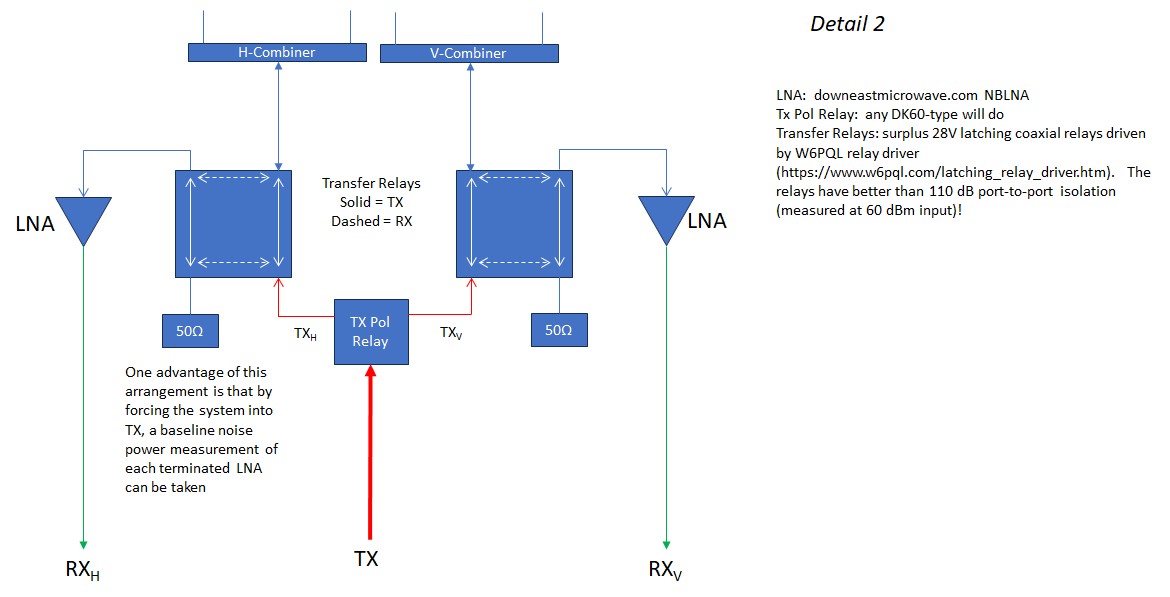NX7U
Scott Townley
Bridgewater, NJ
Relay: For a T/R relay at the antenna, it's all about isolation. The Gemini will make 60 dBm output, and the maximum input the NBLNA will take is about -10 dBm which means the relay has to have 70 dB isolation...oh yeah and handle 1 kW. The generic Dow-Key 60 relays cannot do this. But most so-called 'military style' relays can. These can generally be identified by having all of their connectors in a line, like the one on the left below:
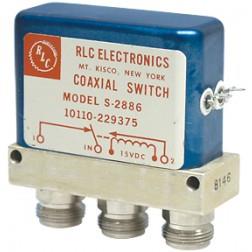
These relays generally offer 70 to 80 dB of isolation up to 1 GHz, and most can handle 1 kW at 144 MHz (just).
But even better are "transfer" relays. These are the ones where there are four connectors arranged in a square (like the one on the right above). Their RF specs are generally similar, but the advantage of the transfer relay is that they give an easy way to assess your system's receive performance.
One additional consideration is that the relay shown on the left is typically used for "common RF" configurations, while the transfer relay on the right is typically used for "split RF" configurations.
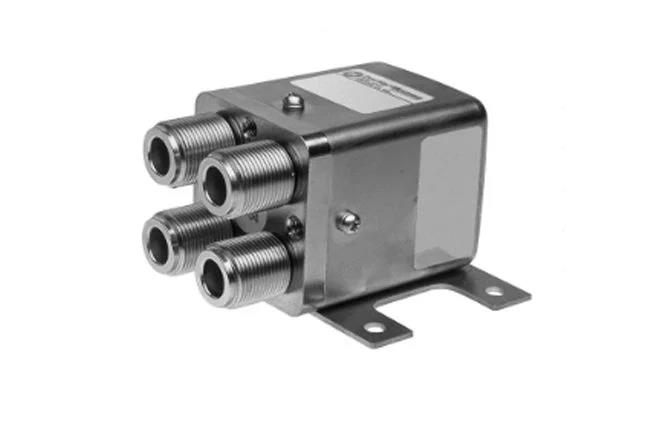
In the cartoon to the left, the relay has ports in the corners of the square. In the "TX" position the solid lines show the connections; TX to ANT and LNA input to 50 ohms. In the "RX" position it's the dashed lines; ANT to LNA input and TX to 50 ohms. As mentioned earlier, these types of relays have 80+ dB of port-port isolation, so the LNA input is generally sufficiently isolated. The big advantage is that in TX, the LNA input is terminated in 50 ohms...so you have an RX noise temperature reference, built in. For example, place the relay (only the relay!) in TX and measure the noise power in the RX line. Then switch the relay to TX and measure the noise power in the TX line. That gives you a Y-factor measurement relative to ~290K and is an excellent sanity check on RX performance.
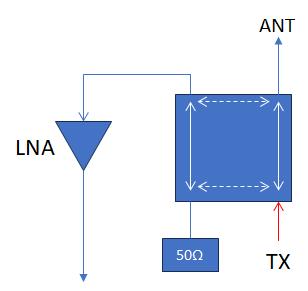
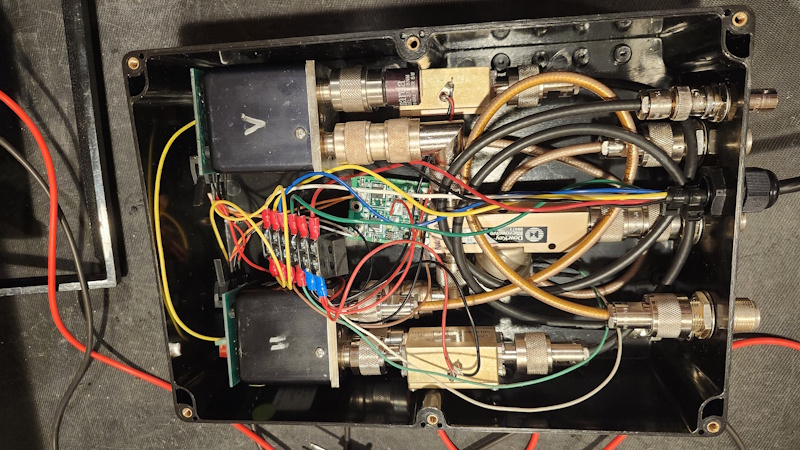
This box is about 7-1/2" wide and 11" long, and everything barely fits inside.
The transfer relays are to the left.
The PCB is the W6PQL latching relay driver circuit (highly recommended for latching relays!)
The Dow-Key relay in the center is to switch TX between H and V (TX Pol Relay)
The similarly-colored rectangles at the top and bottom are the DEMI LNAs.
The Plan:
And the implementation:




